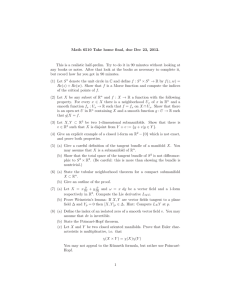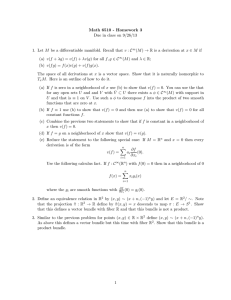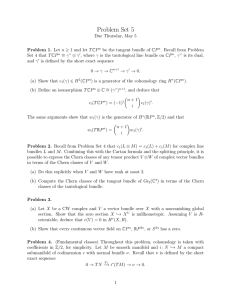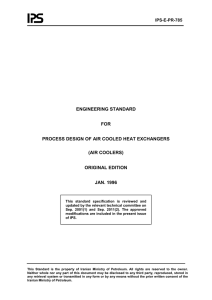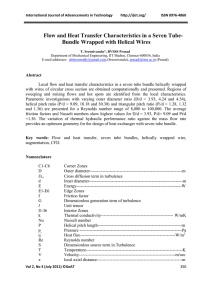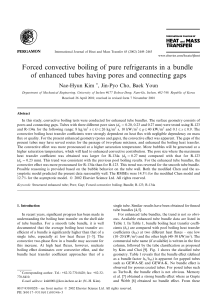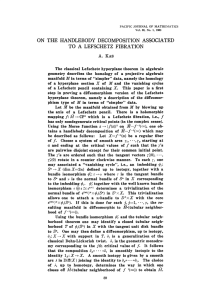HOMEWORK 12 All base spaces are assumed to be paracompact.
advertisement
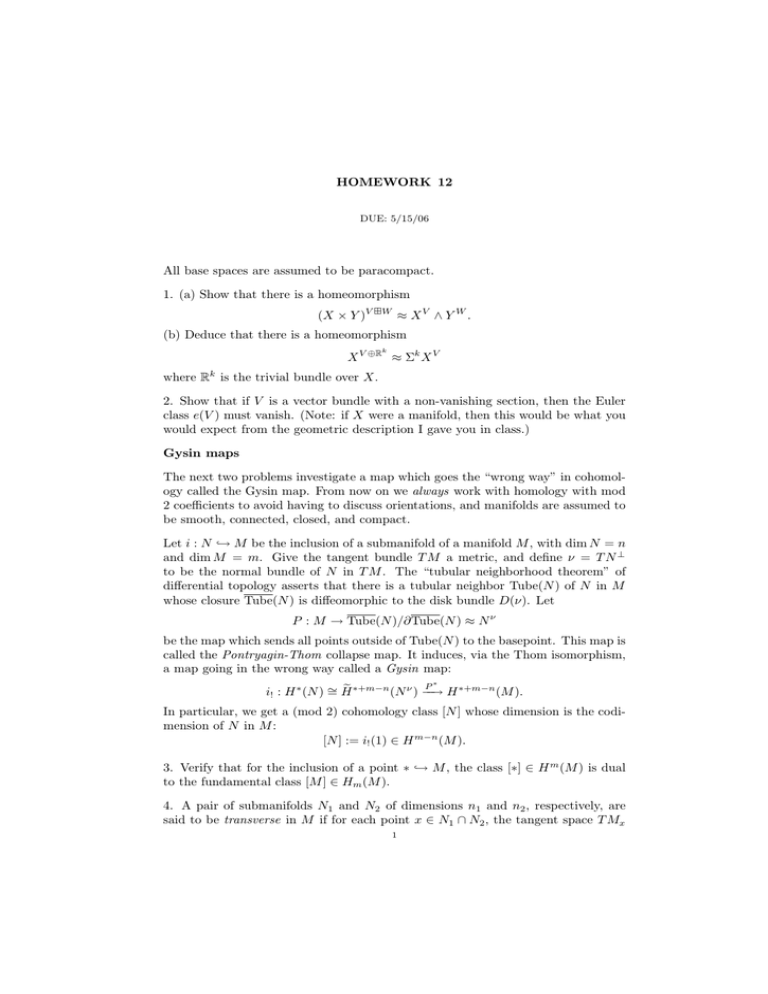
HOMEWORK 12 DUE: 5/15/06 All base spaces are assumed to be paracompact. 1. (a) Show that there is a homeomorphism (X × Y )V �W ≈ X V ∧ Y W . (b) Deduce that there is a homeomorphism k X V ⊕R ≈ Σk X V where Rk is the trivial bundle over X. 2. Show that if V is a vector bundle with a non­vanishing section, then the Euler class e(V ) must vanish. (Note: if X were a manifold, then this would be what you would expect from the geometric description I gave you in class.) Gysin maps The next two problems investigate a map which goes the “wrong way” in cohomol­ ogy called the Gysin map. From now on we always work with homology with mod 2 coefficients to avoid having to discuss orientations, and manifolds are assumed to be smooth, connected, closed, and compact. Let i : N �→ M be the inclusion of a submanifold of a manifold M , with dim N = n and dim M = m. Give the tangent bundle T M a metric, and define ν = T N ⊥ to be the normal bundle of N in T M . The “tubular neighborhood theorem” of differential topology asserts that there is a tubular neighbor Tube(N ) of N in M whose closure Tube(N ) is diffeomorphic to the disk bundle D(ν). Let P : M → Tube(N )/∂Tube(N ) ≈ N ν be the map which sends all points outside of Tube(N ) to the basepoint. This map is called the Pontryagin­Thom collapse map. It induces, via the Thom isomorphism, a map going in the wrong way called a Gysin map: ∗ P � ∗+m−n (N ν ) − i! : H ∗ (N ) ∼ −→ H ∗+m−n (M ). =H In particular, we get a (mod 2) cohomology class [N ] whose dimension is the codi­ mension of N in M : [N ] := i! (1) ∈ H m−n (M ). 3. Verify that for the inclusion of a point ∗ �→ M , the class [∗] ∈ H m (M ) is dual to the fundamental class [M ] ∈ Hm (M ). 4. A pair of submanifolds N1 and N2 of dimensions n1 and n2 , respectively, are said to be transverse in M if for each point x ∈ N1 ∩ N2 , the tangent space T Mx 1 is spanned by the subspaces (T N1 )x and (T N2 )x . The implicit function theorem then may be used to show that N1 ∩ N2 is a submanifold of dimension n1 + n2 − m, with tangent bundle T N1 ∩ T N2 �→ T M . Verify the formula [N1 ] ∪ [N2 ] = [N1 ∩ N2 ] ∈ H 2m−n1 −n2 (M ). In other words, for geometric cocycles in general position, the cup product is given by intersection. 2
